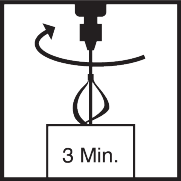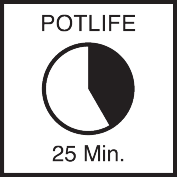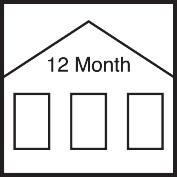Article No. 116071
Transparent priming and mortar resin
Product specifications
On delivery
Component A
Component B
Mixture
Once fully cured
Once fully cured
* Epoxy resin mortar 1 : 5 with standard sand
The stated values represent typical product characteristics and are not to be construed as binding product specifications.
Field of application
- Primer, bonding layer, levelling layer
- Producing compression-resistant mortars, flow coatings
- Base layer for blinded covers
- Primer in the Remmers Deck OS 8 classic system
Properties
- Can be subjected to mechanical loads
- Can be subjected to chemical loads
- Good penetration characteristics
- Coating compatibility test
- Contains no plasticisers, nonylphenols or alkylphenols
- Physiologically harmless once fully cured
- Suitable for use as primer without broadcasting underneath Remmers PU and EP coatings
-
Preparation
-
Substrate requirements
The substrate must be firm, dimensionally stable, capable of bearing loads and free of loose constituents, dust, oil, grease, rubber marks and other substances that could interfere with adhesion.
The tensile strength of the surface of the substrate must be at least 1.5 N/mm² on average (smallest individual value of at least 1.0 N/mm²), and the compressive strength must be at least 25 N/mm².
When used in the OS 8 system, the tensile strength of the substrate must be at least 2.0 N/mm² on average (smallest individual value of at least 1.5 N/mm²).
Test report available on bond behaviour in conjunction with rear moisture penetration according to DIN EN 13578 in the OS 8 system.
Substrates must have reached their moisture balance and must also be protected against moisture penetration from the reverse side, including during use.
Concrete max. 4 m% moisture Cement screed max. 4 m% moisture Anhydrite screed max. 0.3 m% moisture Magnesite screed 2-4 m% moisture In the case of anhydrite and magnesite screeds, moisture cannot be permitted to penetrate from building elements or the ground.
As a general principle, systems which permit the diffusion of water vapour are recommended for use with anhydrite and magnesite screeds.
-
Preparations
Prepare the substrate by suitable means, e.g. steel ball jetting or diamond grinding, so that it meets the requirements specified above.
Broken-out or missing areas in the substrate should be filled flush with the surface using Remmers RM systems (RM = Repair Mortar) or Remmers EP mortars.
-
-
Preparation
-
Combination container
Add the entire quantity of the hardener (component B) to the base compound (component A).
Mix thoroughly with a slow-speed electric mixer
(approx. 300 - 400 rpm).Pour the mixture into a separate container and mix again thoroughly.
Mix for at least 3 minutes.
Insufficient mixing is indicated by streaks forming.
-
Application
-
Setting may be accelerated by adding ACC H. The associated directions for use are available upon request.
As a general principle, higher temperatures will reduce and lower temperatures will increase the times stated.
-
Working tools / cleaning
-
Smoothing trowel, toothed trowel, toothed rubber blade, rubber wiper, epoxy roller, spiked roller, mixing equipment, positive mixer if required
-
More detailed information can be found in the Remmers Tool Programme.
Clean tools, equipment and splashed material immediately while fresh with V 101.
Take suitable protective and waste disposal measures when cleaning.
-
Storage / shelf life
-
If stored unopened in its original container in a cool, dry place and protected against frost, the product will keep for at least 12 months.
-
Usage
-
See application examples
-
-
Application examples
-
IS
Dilute the mixed resin with up to 20% by mass of Remmers V 101 Thinner and apply to the surface until saturated, using a suitable tool, e.g. a rubber scraper, and then work into the substrate with an epoxy roller.
It may be necessary to apply several layers.
approx. 0.30 - 0.50 kg/m² binder (depending on the substrate)
-
P
Apply the mixed resin generously to the surface. Distribute with a suitable tool, e.g. rubber blade, and work into the substrate with an epoxy roller so that pores in the surface of the substrate are completely filled.
It may be necessary to apply several layers.
approx. 0.30 - 0.50 kg/m² binder (depending on the substrate)
-
LLRC
Apply the filled material (up to 1 : 1 parts by weight) to the primed surface and distribute with a suitable trowel. If necessary, roll over with a spiked roller.
per mm layer thickness: approx. 0.85 kg/m² binder
and 0.85 kg/m² Selectmix 01/03 -
EM
Spread and smooth out the filled material (up to 1 : 10 parts by weight) with a smoothing trowel.
per mm layer thickness: approx. 0.2 kg/m² binder
and 2.0 kg/m² Selectmix 0/10 -
BLFSL
Apply the filled material (up to 1 : 1 parts by weight) to the primed surface and distribute with a suitable toothed trowel or toothed rubber blade. If necessary, roll over with a spiked roller.
Liberally broadcast fire-dried quartz sand over the base layer while it is still fresh.
Remove any loose, excess material after hardening.
per mm of base layer thickness:
approx. 0.85 kg/m² binder
and 0.85 kg/m² Selectmix 01/03
-
-
General information
-
Unless otherwise specified, all of the values and application rates given above have been determined under laboratory conditions (20 °C). Slight deviations from these values may arise if the product is worked with on site.
Primers must always be applied so that all pores are filled; it may therefore be necessary to increase the application rate or to apply a second coat.
As mineral substrates have different absorption capacities, impregnated surfaces have a spotted appearance. Not suitable for high-visibility surfaces.
When coating continuous surfaces, only use materials with the same batch number as slight differences in colour, gloss and texture may occur.
Abrasive mechanical loads leave traces of wear.
Epoxy resins are generally not colourfast when exposed to UV light or weather.
Observe the corresponding test certificate for OS 8 systems.
Further notes on working, system construction and maintenance of the listed products can be found in the latest Technical Data Sheets and the Remmers system recommendations.
-
-
Disposal instructions
-
Larger quantities of leftover product should be disposed of in the original containers in accordance with the applicable regulations. Completely empty, clean containers should be recycled. Do not dispose of together with household waste. Do not allow to enter the sewage system. Do not empty into drains.
-
-
Safety / regulations
-
For professional users only!
For further information on the safety aspects of transporting, storing and handling the product and on disposal and environmental matters, please see the current Safety Data Sheet and the brochure entitled "Epoxy Resins in the Construction Industry and the Environment", issued by Deutsche Bauchemie e.V. (3rd edition 2022).
-
















